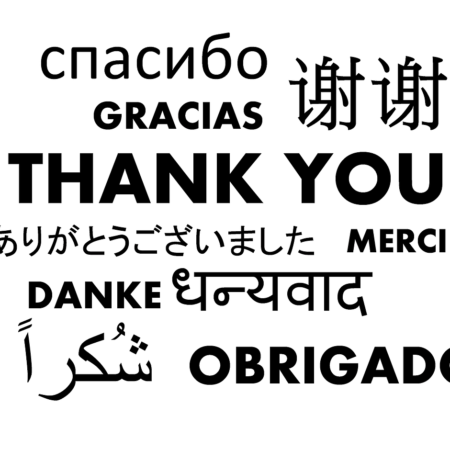
Break the Myth of Multitasking. Learn to Prioritize Priorities
Why do you do two or more things at once (aka multitasking)? Probably because you want to get more done in a shorter time period. All things being equal, that makes sense. If you need to knock out items on your to-do list, you want to accomplish them in as short a time as possible so you can move on, navigate the demands of your day. That’s understandable. But the thing is, all things are not equal with multitasking.
The main reason we multitask is because we assume that we can do two or more things at the same time as well as or better, do it in less time, and do it with less energy. Why are we so driven to pack in so much activity in a shorter time span? A lot of it has to do with the high demands placed on us as members of the workforce, our families, and our communities. Many heads of corporations, managers of Fortune 500 companies, and even struggling entrepreneurs of startups are all trying to beat the clock, beat the competition, and pack more into their day in order to get an edge and succeed.
Another probable reason why we multitask is that so much is “out there” to grab our attention. We’ve been exposed to an extraordinary amount of stimuli, ever since humans figured out how to jump from communicating one on one and in small groups to electronic, digital, and virtual communication with the entire world, now accessible by tapping a button.
Our brains become more and more stimulated; they want more, as massive amounts of information becomes accessible to us via the internet through our computers, phones, other electronic devices … some of which are strapped to us, some of which ping us with electronic notifications. It’s as if we get a “high” out of the electronic streams of information floating in front of us, taunting us to look, read, and listen. We are interacting with the outside world in ways that our ancestors never conceived. Who isn’t tempted at times to glance down at push notifications, the “ding” of our device signaling new emails?
And yet another reason we multitask is simply because we can. Some of us see multitasking as not only part and parcel of our job requirement, but an exercise, a resolute competitiveness, or a sport that tests our physical and mental endurance. Ever-advancing technology feeds that lust to be exposed to more information and do more things faster and faster.
Funny how we once thought technology was going to make our lives easier, reduce the time it took us to accomplish our work. That’s true to an extent, but it seems like a jump in technology is followed by an equal or even higher jump in what is expected of us. Can we ever catch up? Somehow, we have to learn how to prioritize our priorities.
The Heavy Multi-Tasker Fallacy
Before we can learn to prioritize, we need to better understand what multitasking really is, what it accomplishes, and what its effects are on our mental functioning and productivity.
According to a Stanford University study, we frequently overestimate our ability to handle multiple tasks at one time. A study of 100 students found that light multitaskers outperformed heavy multitaskers in several tests. The conclusion was that people who are regularly bombarded with several streams of electronic information don’t pay attention, control their memory, or switch from one job to another as well as those who complete one task at a time. Somehow, that’s not surprising.
What happens is that we’re not able to keep things separate in our minds. The researchers of that Stanford study called it a “failure to filter,” meaning that the students weren’t able to sift through the information to get to the good stuff; they were slowed down by irrelevant information.
The upshot: multitasking slows us down and decreases the quality of our work. It actually takes us longer to complete tasks – and we’re probably making errors in the process.
Multitasking and Attention Deficit
In a sense, when we multitask, we’re exhibiting the symptoms of the clinical behavioral disorder, Attention Deficit Disorder (ADD), the inability to sustain focused attention on one task and being easily distracted.
A psychiatrist in Massachusetts calls the multitasking phenomenon Attention Deficit Trait (ADT). Dr. Edward Hallowell, a veteran psychiatrist, says ADT is partly environmentally induced and partly self-induced. Our brain gets overloaded causing us to have difficulty staying organizing, setting priorities and managing time. So ADT is an affliction brought on by the demands on our time and attention.
“It is a fact that productivity plummets when organizations ask employees to work on multiple overlapping projects and induce ADT by demanding fast and second-rate thinking rather than deep thinking,” says Hallowell. The worker and the organization both suffer when the worker agrees to get overloaded. The result is a decline in productivity.
Multitasking and Brain Damage
Frequent multitaskers perform poorly because they have trouble organizing their thoughts, filtering out irrelevant information, and are slower at switching from one task to another, research seems to suggest. Not only does multitasking sabotage our efforts to get more done in less time and do productive, quality work, it also affects our brains. A neuroscientist in a UK study concluded that multitasking does indeed harm the brain. Multitasking will fuel any existing difficulties you have with concentration, organization, and attention to detail, says the study’s author, neuroscientist Kep Kee Loh.
In fact, multitasking can even lower your IQ. A University of London study showed that in addition to slowing you down, multitasking can result in a drop of 15 points on IQ scores, as discovered with multitasking men in the study. The drop is the equivalent to the average IQ range of an eight-year-old, or to staying up all night.
Lower Emotional Intelligence
We used to think the brain drain from mental overload was temporary. Other research also dispels that belief. Researchers at the University of Sussex in the UK compared the amount of time people spend on multitasking on multiple devices (texting while watching TV, for one) to MRI brain scans. They found that high multitaskers had less brain density in a particular region of the brain … interestingly, the region responsible for empathy and cognitive and emotional control.
The Sussex study correlates with what Travis Bradberry has to say about emotional intelligence. Bradberry studies emotional intelligence (he calls it EQ), conducts emotional intelligence training for many fortune 500 companies, and is the author of the book Emotional Intelligence 2.0. His expert opinion is that multitasking in meetings and other social settings is an indication of low self- and social awareness.
Multitasking or Multi-Switching?
But are we actually multitasking? Earl Miller, a neuroscience professor at MIT suggests people can’t do many things simultaneously. He says we may think we’re multitasking, but what we’re really doing is switching our attention from task to task extremely quickly. There are several reasons the brain has to switch among tasks; one is that similar tasks compete to use the same part of the brain, according to Miller. He calls it “interference between two tasks.”
When two tasks involve communicating through speech or writing, the same part of the brain is being used. So there’s conflict between them. Try writing an email and talking on the phone at the same time and you’ll get his point. They’re nearly impossible to do simultaneously. You can’t focus on one while doing the other. That’s not to say that we don’t often try!
Multitasking also encourages distraction. It’s the antithesis of mental discipline. If you let your mind go off into different directions at once too often, you’ll find it takes longer to go back to giving attention to one task. It’s similar to being interrupted. It takes about 15 minutes or more to get refocused on one task after the interruption. You won’t get all of your tasks done or you won’t do them well.
How to Stop Multitasking?
Clearly, multitasking is not a sign of a cognitively superior brain and it’s not going to get us to accomplish more in less time. So how do we get control of a brain that’s hooked on looking for more things to pay attention to all at once? How do we begin to set priorities for our tasks that we can feel comfortable accomplishing and accomplishing well? Several paths lead to implementing a clear devotion to a task:
Take physical care of your brain. Get more sleep, adopt a healthy diet, and exercise regularly, for starters. Our brain gets a workout when we physically work out and take good care of our bodies.
Eliminate outside distractions. Turn off outside influences. That means when you’re focusing on a task, turn off your phone – or at least turn off the sound and place it face down or in another room. Put on headphones and listen to instrumental music or music designed to study by; YouTube is full of them. Or set up a custom station on an audio streaming service like Pandora for studying, “chilling out” or getting in the zone with ambient music.
Control your mind-wandering. Even when you are focused on one task, have tuned out the world and are in a cocoon of quiet, unrelated thoughts, stray thoughts may pop up, seemingly out of nowhere. Suddenly, we remember that we need to go to the bank, pick up the kids from school, or get items for tonight’s dinner party. As with meditation, don’t get out of joint when this happens. Simply and gently redirect your mind back to your task. You can do this. Think about how you’re able to tune out the chatter of your kids voices when you’re watching an interesting video. Another example of laser focus: We’re driving a familiar route and we having something on our minds, maybe we’re figuring out a problem, going over a conversation in our mind. We get to our destination, park the car, and have no recollection whatsoever of the trip; it was as if we were driving on auto-pilot. We can train our brains to focus!
Set up a task schedule. Set aside specified times during the day to look at email, make and answer phone calls and texts, and engage in social media. This will take quite a bit of discipline, if you’re like most multitaskers. Keep the more challenging tasks for that part of the day when you are more mentally sharp. You know what your peak productive times of the day are. You know if you’re a morning person or if your brain fully wakes up later in the day. Leave all the other stuff and the stuff that’s less important for other times when your brain takes a dip in performance.
Smaller pieces. Before you begin a task, break it into smaller steps and check them off as you complete them to help keep you on target. Sometimes we can become overwhelmed by a large task or a task that have several parts. Tackling it one bite at a time requires less demands and is therefore less stressful. Stress is a time-eater and it likes to snack on our brain cells.
Set up automatic reminders or trackers. Use a timer (the one on your phone is handy). Set up how much time you want to devote to one task and set the timer to go off at the designated time. Keep a record of how long it takes you to perform certain types of tasks (create a proposal, prepare and send an email, write a business plan). Time-tracker apps are also very helpful in keeping track of all your tasks neatly. They’re saved. You can retrieve them later to compare how long it took you to complete which task. Then when you’re planning your tasks and setting up reminders you’ll feel less pressured because you’ll know how much time, on average, to allow for each item on your list. Keeping a record also makes you more realistic about the amount of time required for a task. If you have so much on your list that you can’t find room in the day, you’ll be less reluctant to move the less important items to the next day. On that next day put those higher up on the priority list. You’ll be less likely to beat yourself up because you didn’t accomplish everything that day.
Keep strict limits on minor tasks. Don’t fill up your day with e-mails or voice mails or dealing with minor tasks. They can be major time-eaters. Train your friends and colleagues to not expect immediate answers to their phone calls, texts and emails.
Tomorrow’s to-do list. Before you quit for the day, make a list of what you want to accomplish to start tomorrow’s day. Knowing that a day ahead will let you hit the ground running the next morning. You’ll spend less time planning and regrouping – a common consumer of time.
Take breaks. Sometimes your brain tells you when it needs a break. You get stuck working on a project or you lose some of your “fire.” It may be your brain telling you to “take five.” Get up, stretch, walk outside and get your mind totally off your project. Think about anything else, something pleasant. Walk in a natural setting, take a brisk walk. If your office has an area outside with some benches, trees, plants, that’s perfect. If you can’t find a pleasant natural place, set one up in a designated area, in your mind, or on your computer. Go to your quiet oasis, close your eyes, put in your earbuds, and listen to your favorite sounds.
Declutter your mind space. Resist the urge to fill every minute of your day with a scheduled activity. They have a tendency to merge. Leave gaps in your schedule. Emergencies come up, plans change, priorities shift. Be flexible. We need breathers.
Support your team. Instead of overloading employees, leaders need to think about how to support their team by understanding how overworking staff encourages multitasking, which results in a decline in productivity and a decrease in brain power.
A Losing Game
Multitasking is a brain teaser that will tie your brain up in knots and it will be difficult to untangle. For some, it’s a sport. In some workplaces, it’s a competitive sport that’s encouraged. But it’s a sport you can’t win at. In more enlightened organizations, there’s an increasing concern that multitasking impacts the individual’s ability to think clearly, be productive, and feel good. Don’t play a losing game. Set your priorities and implement them one at a time and encourage those in your organization to do the same.









